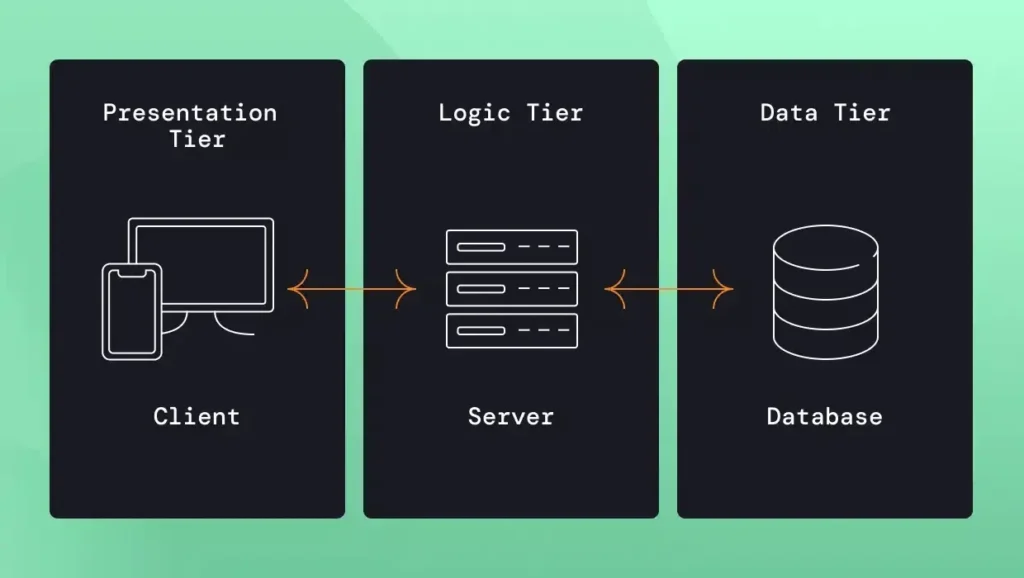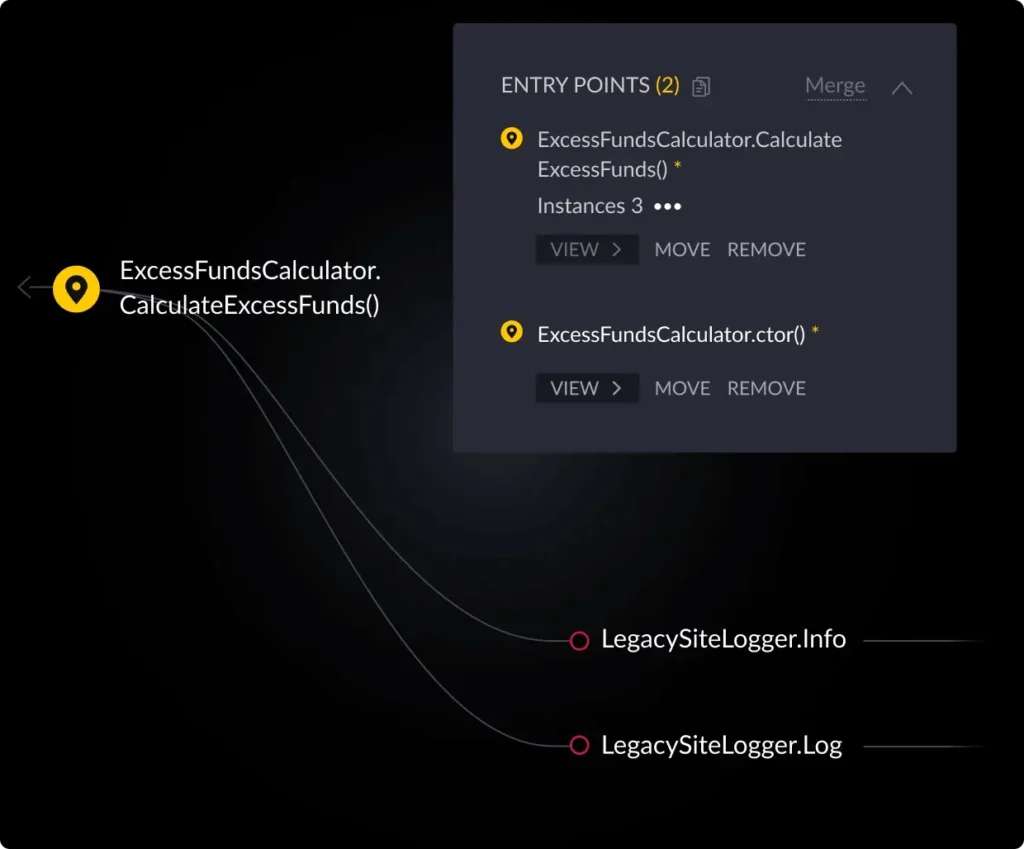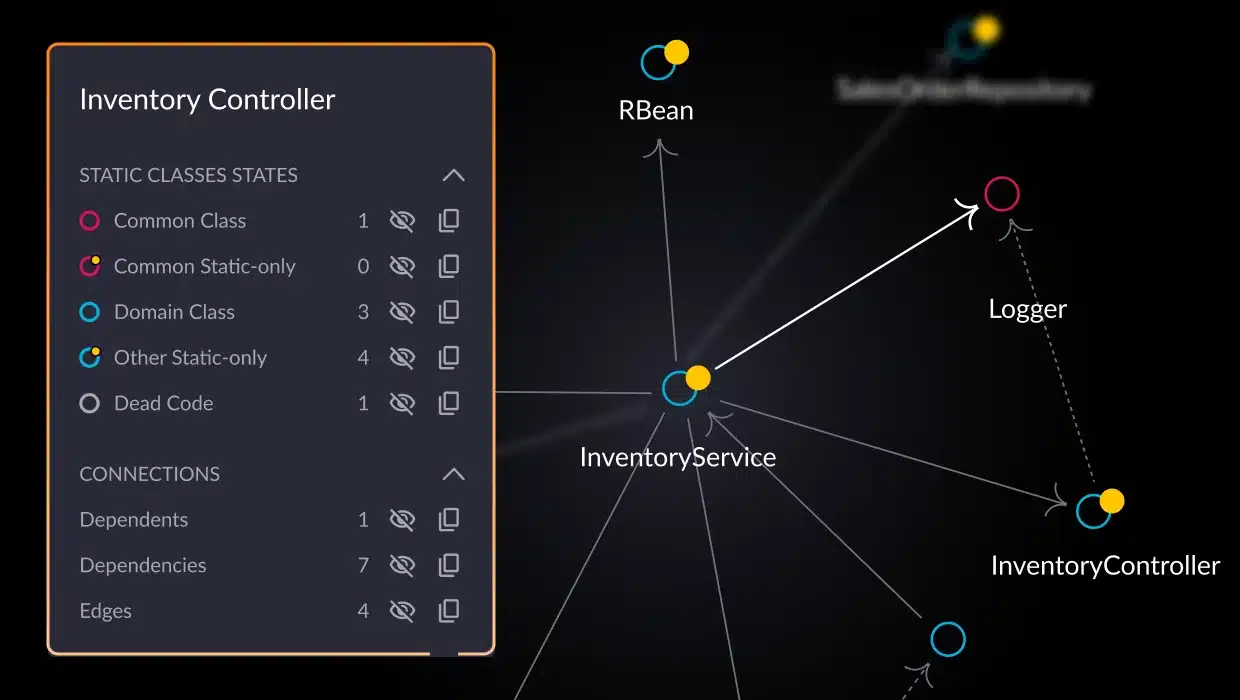Building software can feel like assembling a giant puzzle. Sometimes, the pieces fit perfectly; other times, things get messy and complicated. Planning for a more modular approach to application architecture and implementation can alleviate many issues as the system grows and matures. Keeping things modular makes the software puzzle less complex and more scalable than writing massive monolithic applications where components blur together. Let’s begin by understanding the concept of modular software in more depth.
Understanding modular software
If you’re a software developer or architect, you’ve likely heard the “modular” term tossed around before. But what exactly is modular software? Let’s break it down.
Defining modularity: A simple introduction
At its simplest, modularity is a way of organizing your code. Instead of having one giant, tangled mess, you divide your software into smaller, self-contained modules based on logical divisions within the application functionality. Each part of your code has specific functionality and ownership of the logic and resources that go with that functionality.

Imagine you’re building a software application: Would you try simultaneously constructing the entire thing, mixing user interface design, backend logic, and database configuration? Hopefully not. Likely, you’d approach it component by component, each with its purpose and functionalities, contributing to the app’s overall functionality. This is the core of modularity. Modularity is designing and implementing each component to handle a specific function within the architecture of your app and working to ensure that you have a proper separation of concerns.
Benefits of modularization
A modular approach brings many benefits, making the lives of developers, QA, and the architects who design the systems much more straightforward. Here are a few benefits modularity brings:
Improved readability
Think of a well-organized codebase versus a spaghetti-code mess. Which one makes it easier to find a function? Modular code helps to ensure your code is well-organized, making it easier to understand and navigate.
Easier maintenance
You don’t have to sift through a mountain of code when a module needs fixing or updating. If your code is not modular, even a trivial change can have a cascading effect on other parts of your application, leading to long delays created by the necessity to do extensive testing and retesting of modules. Lack of modularity makes it challenging to be sure your change is isolated to only the part of the code you changed. With good modularity, you can zero in on the correct module and make changes without testing the entire application.
Reusability
Developers can easily reuse modular components across various projects. Have a module that handles user authentication? Great! Use it in multiple projects instead of reinventing the wheel each time. Build once and use anywhere.
Parallel development
Have a team of developers working on the same project? Building a modular application lets you divide and conquer. Team members can work on separate modules without stepping on each other’s toes. Design, build, and test independently, allowing teams to improve productivity.
Simplified testing
By creating systems with a modular architecture, developers and QA teams can test smaller, isolated modules. This is easier than testing a monolithic blob of code or a heavily coupled system. Modularity helps ensure that changes only affect the intended components and makes life easier for everyone at each step.
Modularity is about breaking down complexity, making your software easier to understand, maintain, and scale. So, how do you implement such a system? Let’s look at the design factors next.

Modular system design
Now that we’ve explored the what of modular software, let’s examine the how. How do you design a modular system that brings all the benefits? Let’s consider a few factors when implementing a modular architecture.
Cohesion and coupling: The balancing act
Two key concepts guide modular design: cohesion and coupling. Both these concepts are important when creating modular components.
Cohesion is how well the elements within a module work together to perform a single task. Think of it like a team project — you want a team where everyone is working towards the same goal, not a bunch of individuals doing their own thing. High cohesion in a module means it has a single, well-defined responsibility.
Coupling, conversely, is about how dependent modules are on each other. Ideally, you want low coupling so that components function independently without constantly interfacing with each other. Striking the right balance between cohesion and coupling, you can make a modular system that’s efficient, flexible, and easy to maintain.
Information hiding: The key to effective modularity
Imagine you’re a user interacting with an API. You care about the endpoints and the data they return, not the intricate details of the underlying implementation. That’s the idea behind information hiding in modular software.
A well-designed, modular component provides a clear interface contract (whether it’s a source-code interface or a REST API) that only requests information relevant to the request and does not expose its inner workings. All too often, poorly designed and non-modular components require seemingly random or extra information to be provided. This additional information is a form of information leakage, exposing the inner design through the requirements made by the caller. This extra information only makes sense if you understand the inner workings of the module and leak implementation details to the caller. Developers must work to ensure that only essential information is required to interact with the component.
Information hiding is a cornerstone of modularity and has quite a few benefits. First, you can modify a module’s internal code or even wholly replace it without affecting the rest of the system if the interface remains the same. Additionally, each module can be tested in isolation, focusing on its inputs and outputs without worrying about how it achieves its results. Another benefit is limiting access to internal details reduces the risk of creating security vulnerabilities.
Think of it this way: information hiding is like treating each module as an opaque black box. The modules can work within their scope, sharing only the results with the rest of the system without exposing the inner workings.
The importance of maintaining focus and staying on-task
If a clear focus on modularity is not given, components that start as modular may grow beyond the bounds of the original intent, creating bloat. When adding new features or capabilities, it’s not uncommon for developers to add new capabilities to existing components because of time constraints, the difficulty of adding new components, and many other factors. Ultimately, this leads to a lack of modularity.
The term “separation of concerns” is often used when discussing software modularity. If you boil it down, it’s about separating unrelated functionality instead of lumping it all into one place. Let a module or component handle one task or set of related tasks. For example, if you need to generate a PDF invoice to be sent to customers, it might be tempting to create a single component that handles this task (send the data, generate the PDF, and then email it). Instead, the modular approach to this would be to create a component that produces PDFs given a document and a component that handles emailing or maybe even external communications. Then, the business logic that requires this capability can orchestrate the process of generating and sending the invoice and opens up the possibility of this capability to other components in the system.
Is it possible to be too modular?
One caveat: Programmers can fall into the trap of being overly modular. What starts as a good thing devolves into dividing and subdividing beyond the point of reason with the stated goal of modularity but with no real-world use case in mind. This is no different than creating overly abstracted code. In both cases, the goal of modularity and extensibility results in a mess of coupled and non-modular components. So, a word of caution: while modularity is always the goal, the adage “premature optimization is the root of all evil” is still relevant. Give your software a little time to take shape to help you better understand where refactoring for modularity and extensibility is required.
Modular programming strategies
Now that we’ve covered the theory, let’s get practical. How do you implement modular programming? Two of the most significant factors are the mindset and the programming languages/frameworks used to build the software.
Modular programming = purposeful programming
Modular programming isn’t just a technique but a shift in software development to purpose-led. It’s not just about writing clean code, self-contained classes, or smaller functions; it’s about seeing your software as a collection of interchangeable modules, each with a well-defined purpose. Instead of one massive application, you break it into smaller, more manageable pieces. Each module focuses on tasks like handling user input, processing data, taking orders, or rendering graphics. If you’ve worked with microservices before, this may be obvious, but this approach can work in more monolithic applications and code bases. That said, if the developers implementing a modular system are not used to this approach, it can be a significant shift in mindset. Modular programming gives developers the tools to fight complexity in their software projects, allowing them to decompose extensive, complex systems into small, manageable parts. And don’t be afraid to pause and periodically re-evaluate your implementation at key milestones. All systems change from their initial design as they’re being implemented, which means that your modular design may have changed and lost some of its modularity along the way, causing architectural drift. This is okay! The important thing is to recognize and fix those things as you go, using tactics like architectural observability rather than waiting until some theoretical end date when you will “have time.”
>>Perhaps we can include the “What is architectural observability video here (or link to it)
Choosing the right programming language
The choice of programming language can significantly impact the ease and effectiveness of implementing modular software. While developers can use many languages modularly, some lend themselves to this approach due to their design principles and features.
When we think about languages, as developers, there are two significant groupings that we generally think of for modern software.
OOP, languages like Java, C#, and Python excel in modular development. Their class-based structures, encapsulation mechanisms, and inheritance models naturally facilitate the creation of self-contained modules with clear interfaces. Their focus on pure functions and immutability promotes modularity by minimizing side effects and encouraging the composition of smaller, reusable functions into larger, more complex modules.
Functional programming languages like Haskell, Scala, Elixir, and Clojure present challenges in creating modular software architectures due to the fundamentally different way programs are written. While they provide a wide range of benefits over OOP or procedural programming languages, it’s much more challenging to organize large systems modularly, especially for inexperienced FP engineers. FP languages usually only support the concept of higher-level modules and, by design, lack the structured constructs like classes or interfaces found in object-oriented languages. So, while it can be done, it requires far more discipline and experience as an FP developer vs OOP languages, which shepherd developers in that direction from the outset. Additionally, while testing is more straightforward for pure functions, debugging complex FP code can be very difficult.
When selecting a language to build modular software with, you’ll also want to consider:
- Does the language have a mature ecosystem of libraries and frameworks that support modular development? Leveraging existing tools can accelerate your development process.
- Is the team familiar with the language? Choose a language your team is comfortable with. If not managed effectively, the learning curve associated with a new language can outweigh the potential benefits of modularity.
- Is this language a good fit for the project? Consider your project’s specific needs. Some languages might be better suited for particular domains or performance requirements.
- What languages are used by your company’s existing projects? It might be tempting to use new languages like Zig or newer but more established options like Go, but if nobody else in your company is using them, they may not be the best choice, even if your team is highly experienced. It’s important to consider the long-term effect of choosing a language or framework that differs from what’s normally used unless it aligns with the company’s future direction.
By shifting the team’s mindset towards modularity and choosing the right programming language for your project, you can begin thinking about the next step: implementation.
Implementing modular software
Once your team understands the higher-level paradigms of modularity and has selected their programming language of choice, it’s time to start building! Implementing modular software involves turning the theoretical design we talked about previously into a functioning system. Let’s explore some critical steps in this process:
Creating the basic project structure
A well-organized project structure is crucial for modular software as it sets the stage for everything that comes after. Your project structure should reflect your modular design, with clearly defined directories or packages for each module. Here are some tips for creating a modular project structure:
- Organize by feature: Group related modules together based on their functionality. For example, in an e-commerce system, you might have a “user” module that handles authentication and authorization, a “product” module that manages product data, and an “order” module that handles order processing.
- Use clear naming conventions: Make it easy to identify the purpose of each module and its components. Code names are fun, but they need to be clearer about the component’s purpose and make it harder for new developers to onboard. Use descriptive names for directories, files, classes, etc.
- Separate concerns: Avoid mixing different functionality within the same module. For example, keep your business logic separate from your data access code, aiming for high cohesion and low coupling within components.
- Follow established conventions: Many programming languages have established conventions for project structure. Follow these conventions and standards to make your code more accessible for other developers to understand, especially new developers who have to onboard quickly and add new features.
Testing strategies for modular software
Testing is critical to any software development process, and modular software is no exception. The code’s modular structure makes testing more manageable, allowing testing of each module in isolation. When testing modular software, you’ll want to include various testing strategies. Here are a few to focus on:
- Unit testing: Test each module individually to ensure it functions correctly in isolation. Since each module should be independent, it should be straightforward to implement good unit tests that extensively test positive and negative use cases. You may need to use mock objects or stubs to simulate the behavior of other modules on which your module depends. Still, development using proper modular design and leveraging interfaces, dependency injection, and other techniques should make this straightforward. Try to minimize mocks as they are often challenging to create in a way that 100% reflects the real world. You should use real components whenever possible.
- Integration testing: After completing unit testing, test the interactions between modules to ensure they work together as expected. This allows you to test interfaces for compatibility and discover any issues once you start plugging modules into each other.
- Regression testing: After making changes to your code, run regression tests to ensure that existing functionality and interfaces have remained unchanged. This is extremely important with a modular approach since changes can happen independently.
By incorporating testing into your development process early and regularly, an approach referred to as “shift-left,” you can catch bugs early and ensure quality throughout the software development lifecycle (SDLC).
Domain approach to business logic
In modular software, it is essential to keep business logic separate from other concerns, such as data access and especially user interface code (for more information, see our 3-tier application architecture blog). The domain approach to business logic is a design pattern that helps you achieve this separation. With the domain approach, you encapsulate your business logic into independent modules decoupled from other parts of your system. This makes your business logic easier to understand, test, and maintain. It also makes it easier to reuse your business logic through an application.
By following these strategies when implementing modular software, you can design and create a system that is flexible, scalable, and easy to maintain. As your software evolves, you’ll need to continually evaluate your design and make adjustments to ensure your modules remain cohesive and loosely coupled, something that tools like vFunction can help with.
Modular software architecture
We’ve covered the foundational aspects of modular software; now, let’s shift our focus to the broader perspective: the architecture that will shape the entire system. The architectural choices here will significantly influence your application’s maintainability, scalability, and overall success.
Modular monolith vs microservices
The debate between modular monoliths and microservices is a central theme in modern software architecture. The narrative from the last few years points towards microservices as a superior approach; however, that’s only sometimes the case. When it comes to modular programming, a variant of the monolithic architecture, called a modular monolith, can also be used.
A modular monolith is a single, unified codebase meticulously divided into distinct modules. Each module encapsulates a specific domain or responsibility, promoting code organization and separation of concerns. These modules communicate internally through function calls or other interfaces. Modular systems aim to improve code organization, reusability, and maintainability. But, just like traditional monoliths, modular monoliths can become challenging to scale and manage as applications grow complex. Changes to one module always necessitate redeployment of the entire application, potentially impacting agility and defeating the advantages of a modular monolith. Additionally, as the application and code base grow, a modular monolith can lose its modularity as teams work tirelessly to develop and deploy new features under tight deadlines. ,
Conversely, a microservices architecture comprises a suite of small, autonomous services, each independently deployable and operating within its own process. Services communicate via lightweight protocols like REST or message queues and mesh together to provide one or more business services. Microservices have become popular because of their scalability and independent deployability. Teams can develop, deploy, and scale individual services rather than the entire system. However, the distributed nature of microservices introduces complexities in inter-service communication, data consistency, and overall system management of these distributed applications. Further, system scalability is not guaranteed if the system is designed to scale in a way that does not address new or unforeseen functional requirements.
The decision between using a modular monolith and microservices approach hinges on several factors:
- Project scope and complexity: Smaller projects with well-defined boundaries may thrive within a modular monolith, while larger projects with intricate dependencies might benefit from the flexibility of microservices.
- Team size and structure: Microservices align well with independent teams, allowing them to focus on specific services. Modular monoliths can work well when a smaller, cohesive team manages the entire codebase.
- Scalability and evolution: If rapid, independent scaling of specific components is a priority, microservices offer greater agility. Modular monoliths, while scalable, might require more coordination during scaling efforts since they are still monoliths at their core and may suffer from the scalability and maintainability issues that come with the architecture.
Internal application architecture
Regardless of your architectural choice, your internal application structure should adhere to modular design principles. A layered architecture is a common approach where code is organized into distinct layers based on functionality.

One of the most popular variants of this approach is a three-tier architecture. This traditionally looks like this:
- Presentation layer: Responsible for user interface logic and presentation of data.
- Business logic layer: Encapsulates the application’s core business rules and processes.
- Data access layer: Handles interaction with databases or other data stores.
This layered approach fosters modularity, enabling more straightforward modification and maintenance of individual layers without disrupting the entire system.
Selecting the right architecture and implementing a well-structured internal design are fundamental steps in creating adaptable, scalable, and maintainable modular software that thrives over time.
Best practices for efficient development
Modular software development requires a mindset shift. Let’s examine some best practices that can engrain the modular mindset and ensure the success of modular software projects.
Documenting strategic software modules
Documentation is often overlooked but is a crucial aspect of modular software development. It ensures the team understands each module’s purpose, functionality, and interface. Documentation should go beyond technical details and outline the module’s role in the overall system architecture, interactions with other modules, and any design decisions or trade-offs made during development. Another option is to use an architectural observability platform like vFunction, which helps team members understand the interactions of different components from release to release, even when up-to-date documentation is unavailable.
Here are a few tips for effectively documenting modules within the system:
- Focus on the “Why”: Explain the reasoning behind design choices and how the module contributes to the overall system functionality.
- Keep it up-to-date: As your software evolves, so should your documentation. Modules are bound to change, so reviewing and updating documentation regularly to reflect any changes in the modules’ functionality or interfaces is necessary.
- Use clear and concise language: Avoid terms that might not be understood by all team members. Docs should be easily navigable by all team members who would potentially need to reference them. If non-technical users also access the documentation, separate the business and deep technical documentation.
- Include examples: If a component is meant to be reusable, provide clear examples of how the module can be used and integrated with other system parts. This goes beyond simply documenting function parameters or a brief description. This is helpful for developers who may want to use the module somewhere else in the system.
Modularizing for scalability and flexibility
Modularity is a powerful tool for achieving scalability and flexibility in your software. By designing your system as a collection of loosely coupled modules, you can easily add new features, replace existing modules, or scale individual components without disrupting the entire system. Developers and architects should consider strategic design and implementation choices to get the most out of these benefits. Here are some strategies to modularize for scalability and flexibility:
- Identify core functions: Break down your application into its core functions and encapsulate each within a separate module.
- Design for change: Anticipate potential changes to your requirements and design your modules to be adaptable.
- Use abstraction: Abstract away implementation details behind well-defined interfaces. This allows you to change the internal workings of a module without affecting the rest of the system. Simultaneously, be mindful not to make the system so abstracted that developing and debugging are opaque and complicated.
- Monitor and optimize: Continuously monitor your modules’ size, scope of functionality, and performance.
Additional best practices
In addition to the above, a few other general best practices are worth mentioning. These broad best practices include:
- Start small: Don’t try to modularize everything at once. Start with a few key modules and gradually expand your modular design as you gain experience. This step-by-step approach can keep developers from getting overwhelmed and help to iron out any issues while the scope is still tiny.
- Embrace automation: Automate repetitive tasks like testing and deployment to improve efficiency and reduce errors. Leveraging CI/CD is a prime area where many automated processes can be implemented.
- Collaborate effectively: Modular development requires constant collaboration. Establish clear communication channels between teams working on different modules. Leverage industry standard tools for documenting how modules or services communicate and interact.
Adhering to these best practices can help you harness the full benefits of modular software development and create resilient, adaptable, and scalable software systems.
Using vFunction to build modular software
Many organizations grapple with legacy monolithic applications that resist modernization efforts. These monolithic systems often need more flexibility for rapid development and scalability. vFunction addresses this challenge by providing a platform that automates the refactoring of monolithic applications into microservices or modular monoliths.

By analyzing the application’s structure and dependencies, vFunction identifies potential module boundaries and assists in extracting self-contained services for well-modularized areas of the application. This process enables organizations to gradually modernize their legacy systems and align with the best practices discussed above. vFunction helps unlock the benefits of modularity and guides architects and developers with the insights to shift to a modular approach strategically.
vFunction’s platform empowers organizations to:
Accelerate modernization: Quickly identify domains and logical modules within your application and transform legacy systems into modular monoliths or microservices faster and with less risk.
Reduce technical debt: Improve the maintainability and scalability of existing applications by using vFunction to assess technical debt throughout an application.
Observe architectural changes: Ensure that architectural drift is monitored using architectural observability.
By leveraging tools like vFunction, organizations can embrace modularity within new projects or their existing applications. Leading companies like Trend Micro and Turo have seen significant decreases in deployment time by modularizing their monoliths with vFunction. Using vFunction to build and monitor modular software strategically helps align projects with the best practices for long-term success.
“Without vFunction, we never would have been able to manually tackle the issue of circular dependencies in our monolithic system. The key service for our most important product suite is now untangled from the rest of the monolith, and deploying it to AWS now takes just 1 hour compared to nearly a full day in the past.”
Martin Lavigne, R&D Lead, Trend Micro
Conclusion
Modular software development can represent a fundamental shift in designing and building software, especially when you begin by designing for it at the application level. By embracing modularity, developers and architects can manage complexity, streamline development, and build software that is easier to maintain, scale, and adapt to changing requirements.
From understanding the core principles of modular design to choosing the right architecture and leveraging tools like vFunction, embracing a modular approach to building software is filled with opportunities for growth and innovation.







